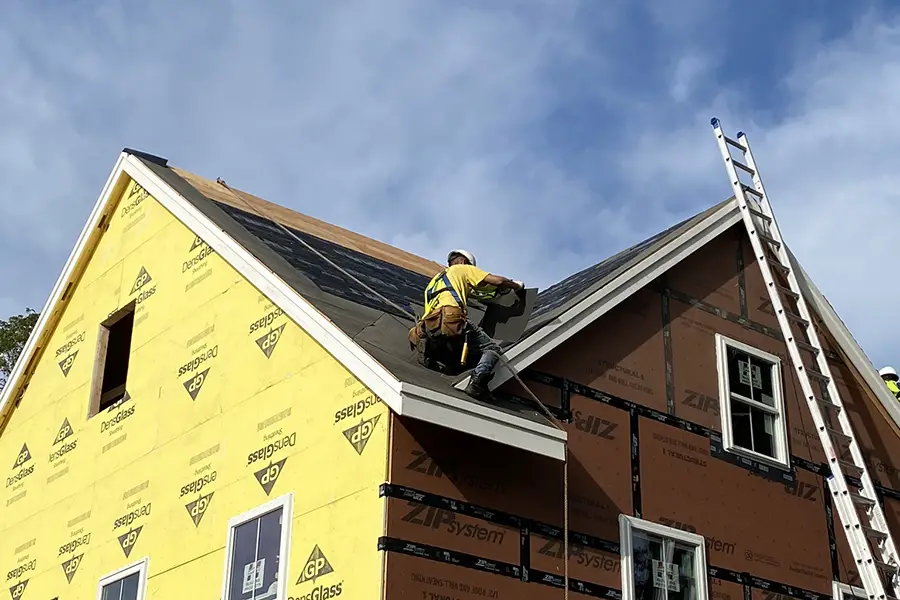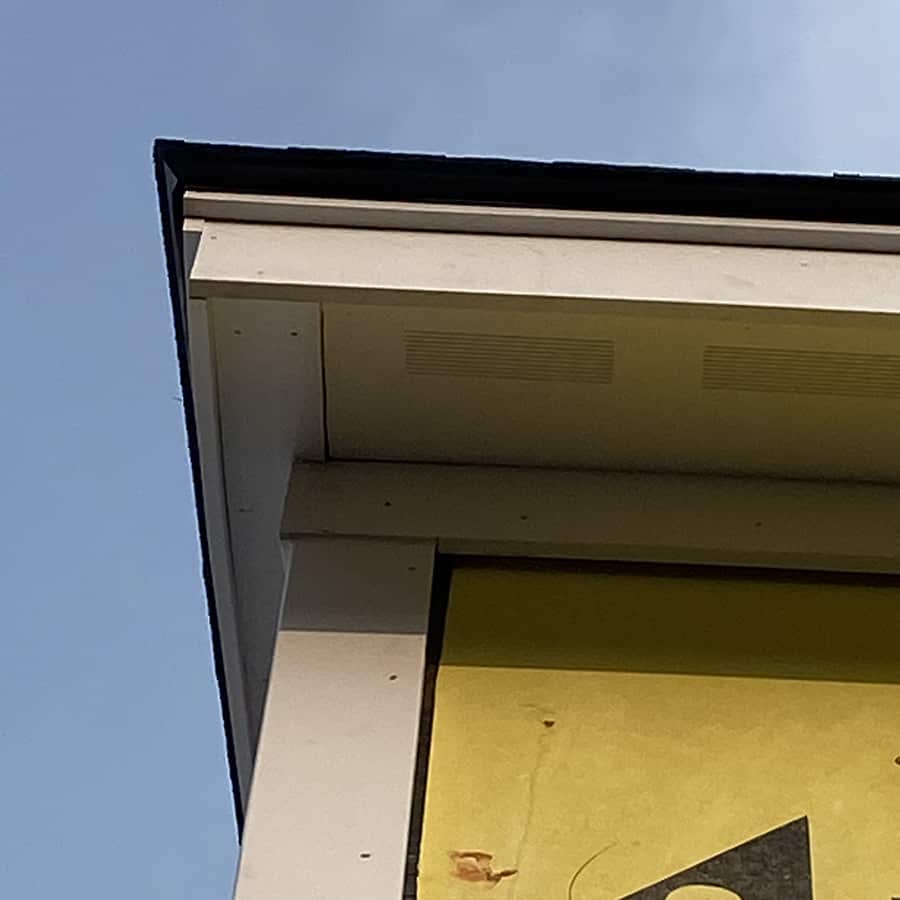Image Source
Though few homeowners get as excited about proper attic ventilation as they do about a master bath remodel, it’s still a necessary part of your home’s ability to work properly that you should familiarize yourself with.
Ridge vents, when paired with soffit vents, are an extremely effective way to keep cool, fresh air moving into your attic space while warm, moist air moves out. This continuous passive ventilation system thus prevents the buildup of potentially dangerous moisture in your attic. Too much moisture in the attic due to lack of or poor ventilation can cause rot, degradation of your roofing materials (and potential voiding of their warranty), mold, and in some climates, ice dams. Nobody wants any of that!
Features and Functions of Roof Vents
A ridge vent is a static (meaning no moving parts) air exhaust vent installed to run the entire length of the peak of a roof. It offers optimal airflow over other roof vents because hot air rises and collects at that highest point of the roof. Ridge vents are low profile and virtually invisible from the ground. You may not know if your home has one unless you’re up on the roof looking at it!
As mentioned, ridge vents are most effective when paired with soffit vents. They are designed to work together to create a balanced ventilation system. The IRC recommends that attics have 1 sq ft of vent area for every 150 sq ft of attic floor. Since non-powered vents are measured in inches, multiply your final required number by 144 to make sure you’re providing the proper amount of ventilation. You should aim to balance the total amount of needed ventilation area equally between soffit vents and ridge vents.
Ridge vents typically have about 18 sq. inches of venting area per foot (but make sure to check the specs). When your soffit vent net free area matches your ridge vent net free area, you have healthy airflow! Air in, air out. It’s important to ensure that these values are balanced and that they’re the appropriate amount for the square footage of your attic. If this article is your first introduction to attic ventilation, we talk more about finding that number for your home here.
Ridge Vent Options
There are two main types of ridge vents: shingle-over and aluminum. There’s not a huge difference in the amount of air moved between the two, but maintenance needs are slightly different due to their respective designs and installation procedures.
Both types of vents are designed to keep weather and pests out while allowing for continuous airflow.
Aluminum Ridge Vents
Aluminum ridge vents are more susceptible to leaks because all the fasteners are exposed. This requires a sealant with installation and regular reapplication with your routine roof maintenance due to exposure. Sealants don’t last forever (as little as a few years) and will need to be reapplied.
Shingle-Over Vents
Shingle-over vents are what they sound like: they’re installed underneath the final layer of shingles at the ridge of the roof, and therefore have a more consistent and discreet aesthetic. They are installed directly onto the roof, and then covered with a final layer of ridge shingles.
Potential Ridge Vent Problems
While ridge vents are generally a popular and extremely effective attic ventilation option, they do have some potential drawbacks (like anything else):
- Ridge vents can become damaged in intense weather, and you wouldn’t necessarily know it until you notice the leak- which could be quite a while!
- If you have a nice long ridge vent but no soffit vents to balance your ventilation system, you run the risk of creating a negative pressure system that will instead pull the warm air from your home rather than through the attic’s eaves. This can increase moisture in your attic and heating costs in your monthly bill, as air will be pulled directly from your (moisture-rich) home through tiny cracks in your walls and ceiling.
- If installed incorrectly, you open the door to rodents, bats, and other critters moving in and living rent-free in your attic. Make sure that you follow the manufacturer’s installation instructions, and be sure to utilize your vent’s manufacturer’s recommendation for weather and critter-resistant end caps.
- Wind can short-circuit your ridge vents, decreasing or nullifying their effectiveness. It can either pass through and across the vent, trapping existing air from leaving, or it can blow right in, adding moisture and debris. A good way to avoid this is to make sure you choose a ridge vent that features an external wind baffle. This will create low pressure above the vent to pull air out of the attic even when the wind is not 100% perpendicular to the vent.
- Clogging. Depending on where you live, you may find that your vents and especially baffles can get clogged by dust, debris, or even moss growth. You can remedy this yourself or hire a local professional to clean them out, but either way, it’s not to be ignored! A clogged vent is a moot vent.
- If you have a hip roof, an attic roof with varying height levels, or a roof with a short ridge compared to its square footage, a ridge vent may not be the most effective exhaust option on its own.
- Aesthetically, most folks prefer the ridge vent to run the length of the roof peak. This should be fine structurally, as long as the ends are properly sealed to the manufacturer’s specifications.
- For example, perhaps the gap in the roof peak itself doesn’t go all the way to the very edges of both exterior walls, but the ridge vent covering it continues to the edges of the building for the sake of uniformity. However, If your home’s ridge isn’t long enough for the proper balance between soffit and roof vents, you’ll have to add at least one additional roof vent, so make sure your math checks out!
Ridge Vent Summary
Ridge vents are a highly effective and popular method for enabling passive attic ventilation. However, as building codes defining attic ventilation standards are somewhat newer, many existing homes don’t have one. While cutting a hole in your roof can be daunting, it’s certainly worth the benefits of having proper ventilation!
If you are redoing your roof and still on the fence about ventilation options (or ridge, as it may be), it may be the perfect time to install ridge vents. They aren’t very expensive, and installation is straightforward. You can also retrofit them to install, but be sure to thoroughly read and follow the manufacturer’s instructions.
As with any home project, be sure to do your research and consult a professional for a second opinion if desired.




